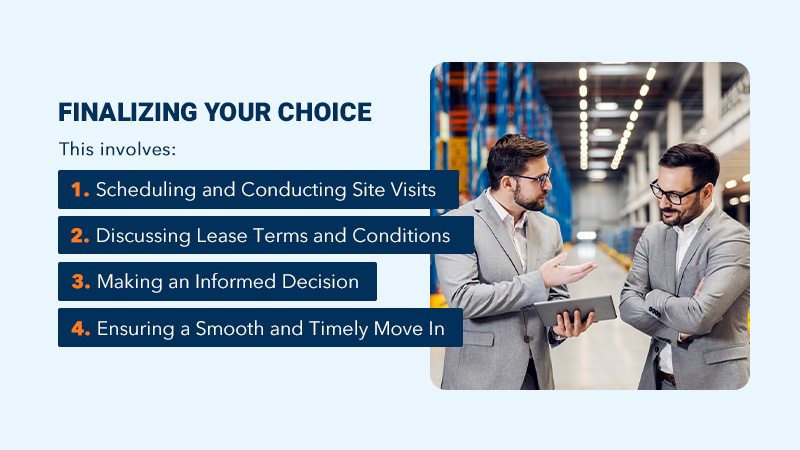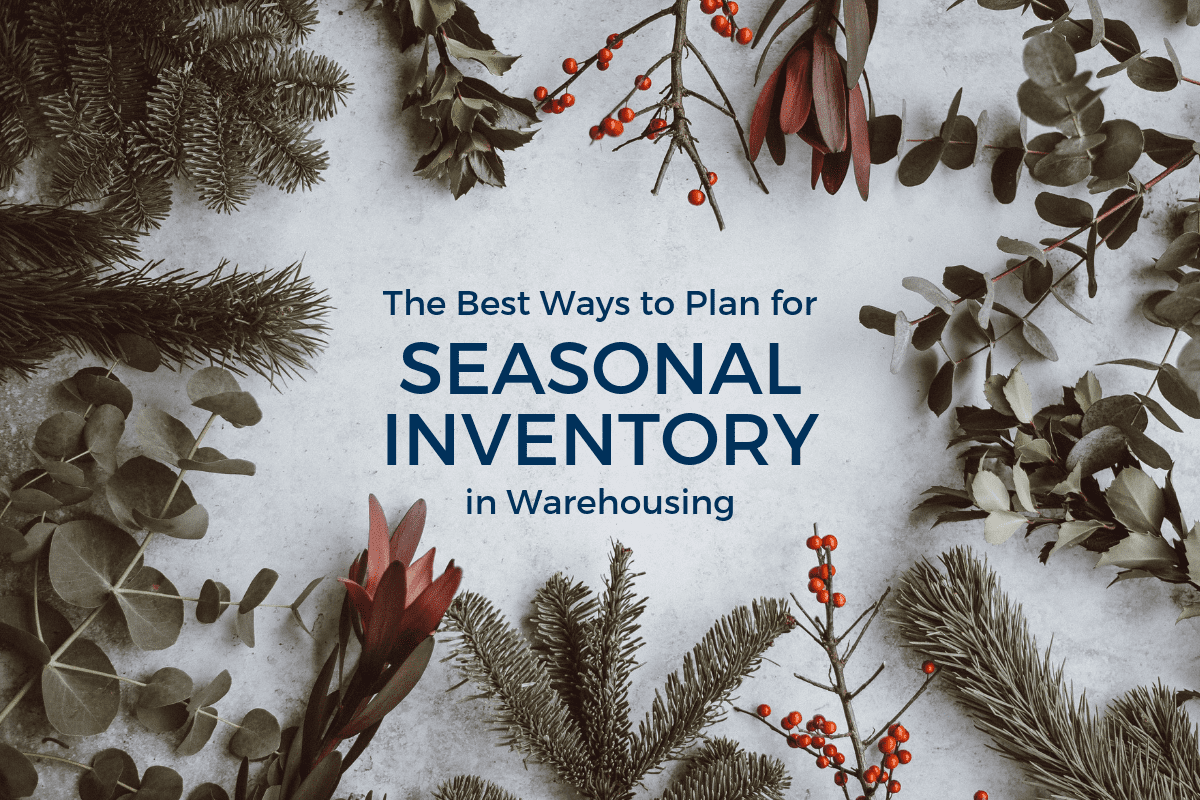Finding warehouse space for rent that is perfect for your needs is a critical decision process for business owners and managers aiming to optimize their operations. Discover the essential steps to ensure you make an informed choice. Selecting the right warehouse for your operations is paramount to ensuring your business operations function smoothly and effectively.
Begin by understanding your business needs, from storage requirements to future growth projections. Next, explore practical strategies for researching and shortlisting potential warehouse spaces, including leveraging online platforms and networking. Eventually, it comes to the crucial steps of finalizing your choice, such as conducting site visits, negotiating lease terms and planning a smooth move-in.
By following this guide on finding the perfect warehouse, you will be better equipped to find a warehouse that meets your current needs and supports your business’s long-term success.
Understanding Business Needs
Knowing where to rent small warehouse space that suits your company starts with clearly understanding your business needs. Evaluate factors influencing your choice to ensure you choose a space that aligns with your operational goals and growth plans.
1. Assessing Your Storage Requirements
Start by determining the type and volume of goods you need to store. Consider the nature of your inventory, such as whether it is perishable or bulky or requires special handling. This assessment will help you identify the necessary space and storage solutions, such as shelving or climate control, to meet your precise needs.
2. Considering the Layout and Design
A warehouse’s layout and design can significantly impact your operations. Look for a space where the layout supports efficient workflow, easy access to goods and optimal use of space. Consider features like ceiling height, column spacing and the floor load capacity to ensure the warehouse can accommodate your storage and operational requirements. Alternatively, look for spaces easily adapted to suit your needs.
3. Understanding Your Utility and Security Needs
Utilities and security are crucial for maintaining smooth operations and protecting your assets. Assess the availability and reliability of essential utilities like electricity, water and internet. Looking for warehouse rentals with all the necessary elements within your package is best.
Additionally, evaluate the security measures in place, such as surveillance systems, fencing, access control and fire protocols, to ensure the safety of your inventory and staff.
4. Considering Your Logistics and Distribution Channels
Your warehouse should be strategically located to support your logistics and distribution channels. Consider the proximity to major highways, ports and your customer base. Evaluate the ease of access for delivery trucks and the availability of loading docks and equipment such as forklifts. A well-located warehouse can reduce transportation costs and improve your overall delivery time.
5. Projecting Future Business Growth
When choosing a warehouse for your business, be sure to consider future growth and development. Therefore, look for a space that can accommodate your expanding operations without needing to relocate once you increase in size. Consider flexible lease terms and potential expansion within the facility or nearby. Planning for growth will ensure you are prepared for the years to come rather than just meeting immediate requirements.
Researching and Shortlisting Warehouse Spaces
Once you understand your business needs, the next step in how to find warehouse space for rent is to research and shortlist potential warehouse spaces. This involves leveraging various resources and methods to find the best options to meet your criteria.
1. Using Online Real Estate Platforms for Shortlisting
Online real estate platforms are valuable tools for finding warehouse spaces. These platforms allow you to filter listings based on specific requirements such as location, size and amenities. Use advanced search features to narrow down your options and save time.
Additionally, many platforms provide virtual tours and detailed descriptions, helping you make informed decisions without visiting every site in person.
2. Making Use of Networking and Referrals
Networking and referrals can be incredibly effective in finding a suitable warehouse space. Connect with industry peers, join local business groups and attend trade events to expand your network. Other business owners and managers can often provide valuable insights and recommendations based on their experiences with warehouse providers.
Referrals from trusted sources can lead you to hidden gems that may not even be listed on public platforms.
3. Evaluating Warehouse Details and Rankings
Once you have a shortlist of potential warehouses, evaluate each option in detail. Consider factors such as lease terms, cost and the condition of the facility. Create a ranking system to compare these aspects objectively and consider them accordingly. Visit the top contenders in person to assess their suitability.
This thorough evaluation process may take time but ensures you choose a warehouse that aligns with your operational needs and budget.

Finalizing Your Choice
After researching and shortlisting potential options, the final step in finding warehouse space to lease is to make an informed decision. This involves visiting the sites, negotiating lease terms and planning your move to ensure a seamless transition.
1. Scheduling and Conducting Site Visits
Site visits are crucial for assessing a warehouse’s suitability. Schedule visits to your shortlisted options and prepare a checklist of critical aspects to evaluate, such as the facility’s condition, accessibility and available amenities.
Pay attention to the overall environment and any potential issues that could affect your operations. During these visits, take detailed notes and photos to help you compare and make an informed decision.
2. Discussing Lease Terms and Conditions
Once you have identified a suitable warehouse, it is time to discuss the lease terms and conditions. Negotiate to secure favorable terms that align with your business needs and budget. Consider the lease duration — as you could get short-term or long-term leases — rent escalation clauses, maintenance responsibilities and additional costs.
Be sure you understand your responsibilities and costs. Clear and transparent communication during this phase helps prevent future misunderstandings or confusion.
3. Making an Informed Decision
After evaluating all aspects and negotiating lease terms, it is time to decide. Review all the information you have gathered, including site visit notes, lease terms and cost comparisons. Consider how well each option meets your current and potential future business needs.
Involve key stakeholders in decision-making to ensure all perspectives are heard, discussed and considered. Making a well-informed decision will set the foundation for a successful and efficient warehouse operation.
4. Ensuring a Smooth and Timely Move In
Planning and executing a smooth move-in process is essential for minimizing disruptions to your operations. A warehouse move is no small feat, so develop a detailed move-in plan that includes timelines, responsibilities and the necessary resources. Coordinate with your team and any external service providers to ensure everything is in place for a seamless transition.
Address any logistical challenges in advance and communicate clearly with all involved parties. A well-organized move-in process will help you start using your new warehouse space efficiently and effectively from the very beginning. Factor in any hindrances or potential issues that may arise, and develop contingency plans to help you work around these

Find Warehouse Rentals From RISE Commercial District
Now that you know how to find the perfect warehouse, consider the options RISE Commercial District offers. We provide warehouses in various sizes, which are ideal for multiple business types. Our facilities include utilities, free business Wi-Fi, quality amenities such as dumpsters and restrooms, premium 24/7 security, and flexible lease agreements.
We also offer a Flex option, including both offices and warehouses, so you have all you need under one roof. If you would like to book a tour of one of our many locations, from Wisconsin to Ohio, please contact us today! We would love to hear from you and discuss how we can offer you the perfect small warehouse for your current and future business needs.



